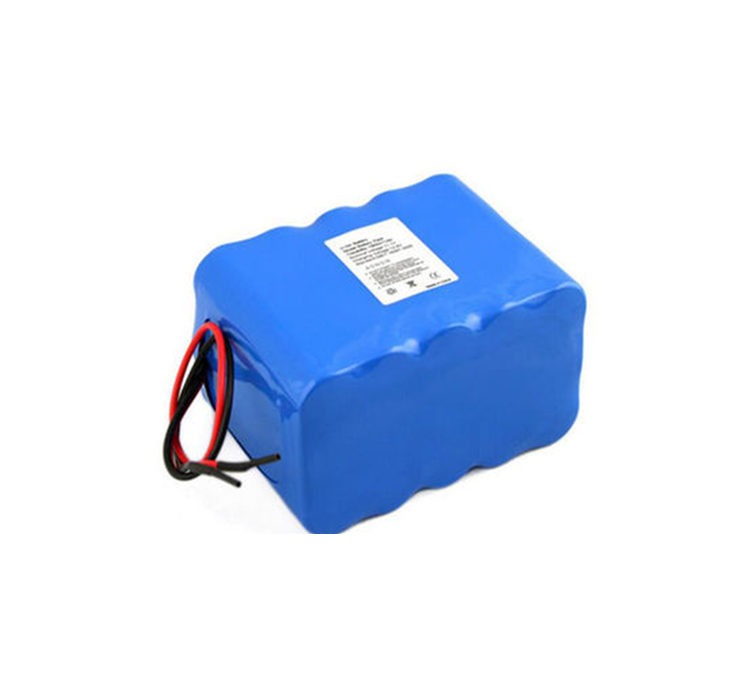
Jan 12, 2022 | Company News
The start-up of the new battery includes adding electrolyte, charging and device, which is usually completed by the service personnel of the lithium battery shop authorized to repair electric motorcycles. The user can first check the appearance of the battery, such as whether the shell has scars and cracks, and the terminal should be free of inclination and deformation. Be careful not to bend, block or press the vent pipe of the flat battery during operation.

Application and protection of lithium ion battery for motorcycle
Press the button every time you start, and the time for the lithium battery manufacturer of the electric motorcycle shall not exceed 5 seconds. If it cannot be started for several consecutive times, check the lithium battery manufacturer of the electric motorcycle to see the oil supply system, starting and incineration system.
The following conditions will lead to over discharge or lack of charge of the battery and shorten the service life of the battery:. Frequent start and short travel interval. Travel at low speed for a long time. Hold the brake handle tightly or step on the rear brake pedal to keep the brake light on. Device rated electrical accessories or replace with high-power bulbs.
When it is difficult to start, the lights are dim and the horn is not loud, the power shall be supplemented immediately.
Check the liquid level every 1-3 months. If the liquid level is lower than the minimum liquid level line, add distilled water to the high liquid level line. After adding water, it is best to supplement electricity. The unprotected battery is outside.
When the motorcycle is not used for a long time, please recharge it before stopping use, remove it for storage and replenish it once a month.
Safety precautions of lithium ion battery for motorcycle
Explosive gas will occur when the battery is used and charged. It is forbidden to approach open fire or high temperature. It shall also prevent positive and negative short circuits and loosening of positive and negative terminals.
Electrolyte contains strong acid to prevent splashing on skin, eyes and clothes. Once touched, clean immediately with plenty of water. If you take it by mistake, you should drink a lot of water or milk immediately and send it to the hospital for treatment.
Adding rated power accessories such as anti-theft device will have a certain impact on the battery.
Method for safe use of lithium ion battery for motorcycle
1. Use protective articles when adding electrolyte to prevent electrolyte from overflowing or splashing on the skin.
2. The remaining electrolyte shall be properly kept in the container and neutralized with quicklime when scrapped.
3. Open the filling plug before charging, because a large amount of gas will be released from the battery during charging. In addition, pay attention to good ventilation in the charging room and strictly prohibit smoking.
4. The waste battery shall be treated in time to prevent electrolyte from flowing out and damaging the surrounding articles, and children shall not play with it.
5. When the electrolyte touches the skin, wash it with clean water immediately; In case of splashing people’s eyes, wash them with clean water immediately for 15min.
6. Eat the electrolyte into the body by mistake, drink several mouthfuls of clear water immediately, and then mix the egg white and emulsion of the egg; You can also drink plenty of water and rest.
7. When electrolyte is splashed on clothes, wash them with water immediately, and then neutralize them in weak alkali solution.
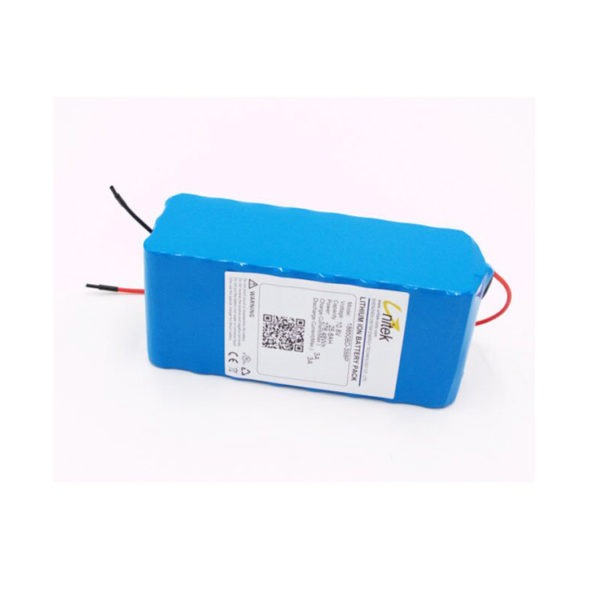
Jan 11, 2022 | Company News
Condition inspection of lithium ion battery for motorcycle before charging
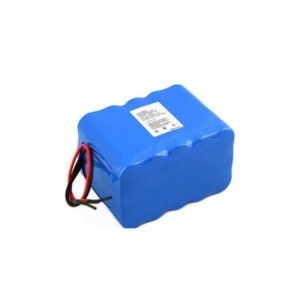
Check whether the voltage of motorcycle battery is lower than the standard value. Observe the inside of the battery. If one or several battery units are corroded, the electrode plate becomes white, or there is material accumulation at the bottom, or the electrode plate is warped, replace the battery. If the battery terminal is dirty, corroded or oxidized, it can be cleaned with a wire brush. If the cleaning is not clean, drop a little electrolyte to corrode the surface and wipe it dry with clean water.
Charging method of lithium ion battery for motorcycle
This is an important part of motorcycle battery maintenance, which directly affects the service life of the battery. When charging, the current should not be too large. It is recommended not to use fast charging.
When charging, please use half of the rated charging current and double the rated charging time. When charging, cool the battery in cold water. Because the battery releases a lot of heat during charging, if it is not dissipated as much as possible, the electrode plate will be bent and deformed, resulting in damage to the battery.
During charging, the plug of unsealed battery shall be opened and carried out in a well ventilated place away from kindling to prevent accidents caused by hydrogen during charging.
Detection method of lithium ion battery for motorcycle after charging
After the battery is charged, do not rush to test, but check after standing for 30 minutes. Otherwise, the state of the battery cannot be accurately reflected. First check and correct the liquid level, and then measure with a multimeter.
It must be noted that the method of short-circuit ignition shall not be used to judge the current. A headlamp bulb with the same rated voltage as the battery can be connected with the battery, and the light can be observed for 5 minutes. If the light turns dark or goes out, it indicates that the battery is damaged and should be replaced.
In addition, the choice of charger is also very important. Chargers include variable voltage type, constant voltage type, constant current type, etc. it is best not to use self-made chargers. For sealed maintenance free batteries, it is best to use a special charger. However, it should be noted that some constant voltage and constant current chargers cannot charge sealed maintenance free batteries.
If the motorcycle battery is maintained by the above methods, the service life of the battery can be extended to five or six years.
Method for maintaining lithium ion battery for motorcycle
The battery in use shall regularly check the electrolyte level to make it within the specified range. If the liquid level drops due to splashing and pouring of electrolyte, a certain relative density of electrolyte shall be added.
The liquid filling plug shall be covered in time after charging and liquid filling; The surface of the battery shall be kept clean to prevent sundries from entering the battery, causing short circuit and self discharge between poles. The battery shell shall be maintained to avoid cracking. In case of electrolyte leakage, it shall be cleaned in time to prevent the surrounding parts from being corroded by acid. The positive and negative terminals have good conductivity. If there is oxidation or corrosion on the surface, it shall be cleaned in time and coated with butter for corrosion prevention.
Method for preserving lithium ion battery for motorcycle
The wet storage method is suitable for temporarily unused batteries. The storage battery shall be fully charged during storage, and the vent hole shall be sealed and placed in a dark place indoors. The storage time should not exceed 6 months. Wet storage batteries can only be used after charging.
The dry storage method is suitable for fixed open-ended batteries. Because most motorcycle batteries are closed, this method is generally not used for storage.
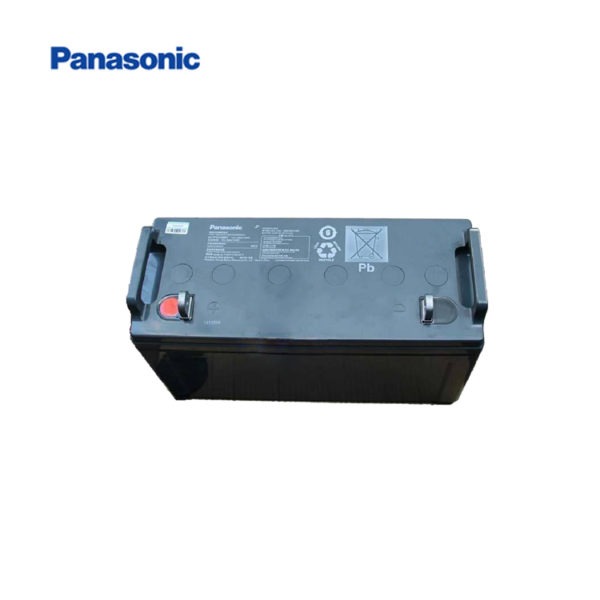
Jan 10, 2022 | Company News
Installation of valve regulated lead acid batteries
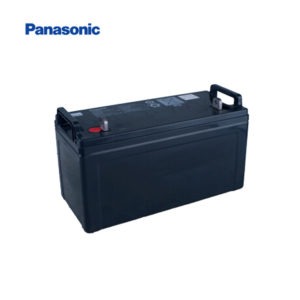
Before installing and using the battery, first read the product manual carefully and install and use it as required. During installation, pay special attention to the following aspects.
1. The installation scheme shall be formulated according to the location and conditions, such as ground load, ventilation environment, sunlight, corrosion and organic solvents, machine room layout, convenience of maintenance, etc.
2. During installation, new and old batteries shall not be mixed, and different types of batteries or batteries with different capacities shall not be mixed.
3. All batteries are 100% charged and must be operated carefully to avoid short circuit. During installation, insulating tools and insulating gloves shall be used to prevent electric shock.
4. Before installation and use, the battery shall be stored at 0 ~ 35 ℃ for 3 months. If it exceeds 3 months, the battery shall be recharged according to the standards given in the operation manual.
5. Connect the battery connection between columns, layers and panel terminals according to the specified series parallel lines. Carefully check the positive and negative polarity and measure the system voltage before installing the end connector and connecting the whole power system. And note: on the premise of meeting the design cross-sectional area, the outgoing line shall be as short as possible to reduce the voltage drop during high current discharge; When more than two groups of batteries are connected in parallel, the cable from each group of batteries to the load should be the same length, so as to facilitate the current balance of each group of batteries during battery charging and discharging.
6. When connecting the battery, the screws must be tightened, but the damage between the pole embedded copper due to excessive tightening force shall also be prevented.
7. After installation, check the system voltage and the positive and negative directions of the battery again to ensure that the battery is installed correctly.
8. Use a soft cloth soaked with soapy water to clean the battery case, cover, panel and connecting wire. Do not clean with organic solvent to avoid corroding the battery cover and other parts.
Precautions for valve regulated lead acid batteries
Valve regulated sealed lead-acid battery is also called “maintenance free battery”. Due to its convenient use, it has been widely used in power and post and telecommunications departments in recent years. However, due to lack of understanding of the characteristics of valve regulated sealed lead-acid battery, it is often scrapped in a few years, causing great losses to enterprises.
First of all, it is wrong to regard “maintenance free battery” as no maintenance. “Maintenance free battery” is only the advertising language of the manufacturer. During the use of valve regulated sealed lead-acid battery, pay attention to the temperature of the battery and the floating charge voltage at any time. If the charging equipment does not have the function of temperature compensation, it shall be corrected according to the floating charge voltage of each single battery falling by 3MV for every 1 ℃ rise in temperature.
Since the internal condition of valve regulated sealed lead-acid battery can not be observed, discharge test shall be conducted regularly during use to detect the battery capacity and avoid failing to play the role of standby power supply due to its capacity decline. It should be noted that the battery should not be over discharged during discharge. It must be recharged within 12h after discharge, otherwise it will cause permanent damage to the battery. Also pay attention to the capacity and type of valve regulated sealed lead-acid battery.
Maintenance of valve regulated lead acid batteries
Placement of valve regulated sealed lead-acid battery
Valve regulated sealed lead-acid battery does not need a special battery room, but can be installed in the same room with communication equipment. It can be stacked, combined or installed on the rack.
Frequent inspection items of valve regulated lead acid batteries
Floating charge voltage, ambient temperature.
Whether the connection is loose or corroded.
Whether the battery shell has leakage and deformation.
Whether there is acid mist overflow around the pole and safety valve.
Supplementary charge of valve regulated lead acid batteries
After the installation of the battery system, recharge the battery pack.
If the battery is put aside for more than three months, recharge the battery pack.
Discharge of valve regulated lead acid batteries
Check discharge test shall be conducted once a year based on the actual load to discharge 30% – 40% of the rated capacity.
The capacity test shall be conducted once every three years and once a year after six years of use.
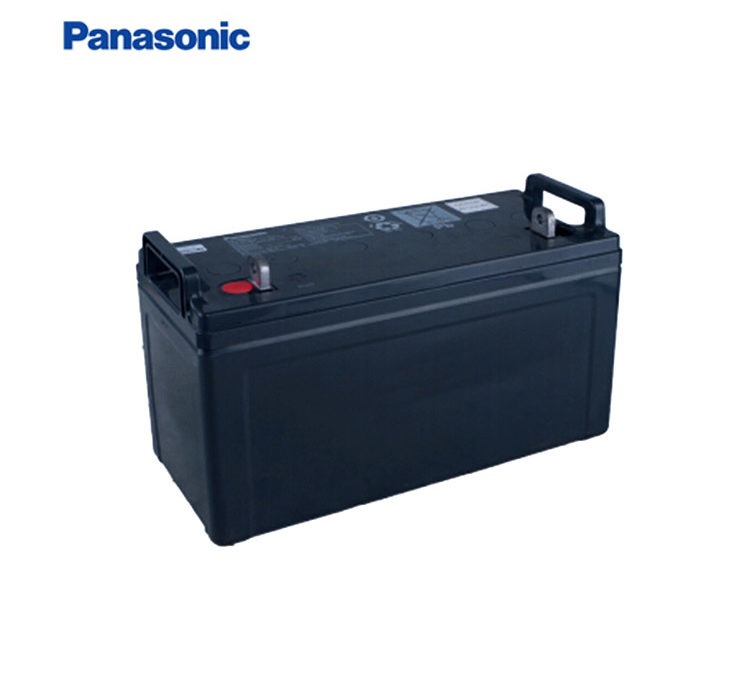
Jan 6, 2022 | Company News
Valve regulated lead acid batteries structure

Positive electrode
The positive electrode is lead, antimony and calcium alloy breast board, containing lead oxide as active material. Ensure sufficient capacity, maintain battery capacity during long-term use and reduce self discharge.
Negative pole
The negative electrode is lead, antimony and calcium alloy breast board, containing sponge fiber active substances. Ensure sufficient capacity, maintain battery capacity during long-term use and reduce self discharge.The positive and negative plates are made by mixing sulfuric acid, water and lead powder into lead paste and coating on the grid.
A partition
The advanced multi microporous AGM separator maintains the electrolyte to prevent the short circuit between the positive and negative electrodes. The separator adopts non-woven ultra-fine glass fiber, which has stable chemical properties in sulfuric acid. The porous structure helps to maintain the electrolyte required for the reaction of active substances.
Safety valve
The material is synthetic rubber with excellent quality, acid resistance and aging resistance. Release gas when the internal pressure of the battery is higher than the normal pressure to keep the pressure normal. Prevent oxygen from entering.
Terminal
According to different batteries, the positive and negative terminals can be connecting pieces, rods, studs or outgoing lines. The terminal shall be sealed with reliable adhesive. Color of seal: red is positive and black is negative. The sealed terminal is conducive to high current discharge and long service life
The valve regulated lead acid batteries is designed as follows: in the battery, a part of the electrolyte is absorbed in the pole piece and diaphragm, so as to increase the oxygen absorption capacity of the negative electrode, prevent the loss of electrolyte and make the battery sealed.
Advantages of valve regulated lead acid batteries
Use fast
The valve regulated lead acid batteries only needs to strictly control the charging voltage of the rectifier and accept the specified voltage for constant voltage charging according to the different requirements of floating charge utilization and recycling. There is no need for the personnel on duty to worry too much about the charging process of the battery, add distilled water, and often detect the battery terminal voltage, electrolyte specific gravity and temperature, Just check the battery terminal voltage and discharge capacity regularly.
Easy placement
The valve regulated lead acid batteries has been charged and discharged, and the charged battery leaves the factory, so the user does not need to carry out the cumbersome initial charging process when placing and utilizing it. If the arrangement time is higher than six months, the supplementary power can be carried out according to the regulations of the manufacturer. After sufficient power, a capacity experimental discharge check shall be carried out to determine whether the battery capacity meets the standard requirements, Whether the quality is stable and reliable.
Quiet and reliable
The valve regulated lead acid batteries is sealed and can be placed vertically or horizontally for use. There is no acid mist, non-toxic and harmful gas overflow. Because the battery adopts the constant pressure charging system, the oxygen circulation process is realized inside the battery, and there is little water loss. Although it is occasionally overcharged, a small amount of gas can be pushed out by the quiet valve, and the battery shell will not swell or even burst due to excessive pressure.
Save investment
The valve regulated lead acid batteries does not pollute the configuration and surrounding environment, and can be used together with the electronic configuration. There is no need for a room dedicated to battery arrangement and maintenance, and the amount of maintenance is greatly eliminated. Moreover, the battery placement can accept the stacked battery rack, which has a small floor area and saves the investment cost of the power supply system.
In short, the excellent characteristics of valve regulated lead acid batteries undoubtedly create extremely favorable conditions for the scientific management of communication, electric power, information, finance and other industries. It is easy to realize microcomputer control and realize the Modern Management Essentials of unattended and microcomputer integrated monitoring.
Principle of valve regulated lead acid batteries
Water will be electrolyzed during and at the end of charging of valve regulated lead acid batteries. Generally, oxygen appears at the positive electrode and hydrogen appears at the negative electrode. Because the battery adopts maintenance free electrode plate, the potential during hydrogen precipitation is increased. In addition, due to the different reaction area and reaction speed, oxygen appears on the positive electrode before hydrogen appears on the negative electrode. Due to the valve regulated battery structure, a certain pressure and gas are retained in the battery to ensure the above reaction cycle. At the same time, it also inhibits the precipitation of hydrogen from the negative electrode and controls the water consumption in the battery. Therefore, the battery can operate in a sealed manner.

Jan 5, 2022 | Company News
Lithium ion battery protection circuit includes overcharge protection, overcurrent / short circuit protection and over discharge protection. It requires high accuracy of overcharge protection, low power consumption of protection IC, high withstand voltage and zero volt chargeability.
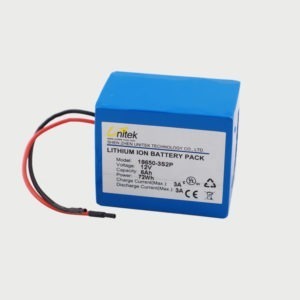
In recent years, more and more products such as PDA, digital cameras, mobile phones, portable audio devices and Bluetooth devices use lithium-ion batteries as an important power supply Lithium ion batteries have the advantages of small volume, high energy density, no memory effect, high cycle life, high voltage batteries and low self discharge rate. They are different from nickel cadmium and nickel hydrogen batteries. Lithium ion batteries must consider the safety during charging and discharging to prevent characteristic deterioration Protection against overcharge, over discharge, overcurrent and short circuit of lithium-ion batteries is very important, so protection circuits are usually designed in the battery pack to protect lithium-ion batteries.
Principle of lithium ion battery protection circuit
Overcharge protection
The principle of overcharge protection circuit is: when the external charger charges the lithium-ion battery, in order to prevent the rise of internal pressure caused by temperature rise, it is necessary to terminate the charging state At this time, the protection circuit needs to detect the battery voltage, activate the overcharge protection when it reaches 4.25v, turn the power from on to off, and then cut off the charging. In addition, attention must also be paid to overcharge detection misoperation due to noise, so as not to be judged as overcharge protection Therefore, the delay time is to be set, and the delay time cannot be shorter than the duration of the noise.
Over discharge protection
In the case of excessive discharge, the decomposition of electrolyte leads to the deterioration of battery characteristics and the reduction of charging times Lithium ion battery protection circuit can prevent excessive discharge and realize battery protection function.
Overcurrent and short circuit current
In case of overcurrent or short circuit due to unknown reasons, the discharge must be stopped immediately to ensure safety.
The principle of overcurrent protection circuit is that when the discharge current is too large or short circuit occurs, the protection circuit will activate overcurrent protection.
New functions of lithium ion battery protection circuit
Overcurrent protection during charging
When the charger is connected for charging, an overcurrent occurs suddenly, and the circuit immediately detects the overcurrent. At this time, the cout will change from high to low, and the power will change from on to off to realize the protection function.
Lock mode in case of overcharge
Usually, the protection circuit will pass a delay time during overcharge protection, and then turn off the power to achieve the purpose of protection. When the lithium-ion battery voltage drops to the release point, it will recover.After overcharge protection, as long as the charger is connected to the battery pack, it will enter overcharge locking mode At this time, recharging will not occur even if the voltage of the lithium-ion battery decreases. The state of charge and discharge can be restored by removing the charger and connecting the load.
Reduce the size of protection circuit assembly
The delay capacitor for overcharge and short circuit protection is integrated into the protection IC to reduce the size of the protection circuit component.
Requirements for performance of protection circuit
High precision of overcharge protection
In case of overcharge of lithium-ion battery, the charging state must be cut off in order to prevent the rise of internal pressure caused by temperature rise The protection circuit will detect the battery voltage. When overcharge is detected, the power of overcharge detection will turn it off and cut off charging.
Reduce power consumption of protection circuit
With the increase of service time, the voltage of the charged lithium-ion battery will gradually decrease, and finally fall below the standard value. At this time, it is necessary to recharge If you continue to use the battery without charging, it may cause excessive discharge and make the battery unable to continue to use In order to prevent excessive discharge, the protection IC must detect the battery voltage. Once it reaches below the excessive discharge detection voltage, the power of the discharging party must be turned off to cut off the discharge.
Withstand high voltage
When the battery pack is connected with the charger, there will be high voltage instantly, so the protection circuit shall meet the requirements of high voltage resistance.
Low battery power consumption
In the protection state, the static current consumption must be less than 0.1ua.
Zero volt rechargeable
The voltage of some batteries may be as low as 0V due to too long storage or abnormal reasons, so the protection IC can also be charged at 0V.









